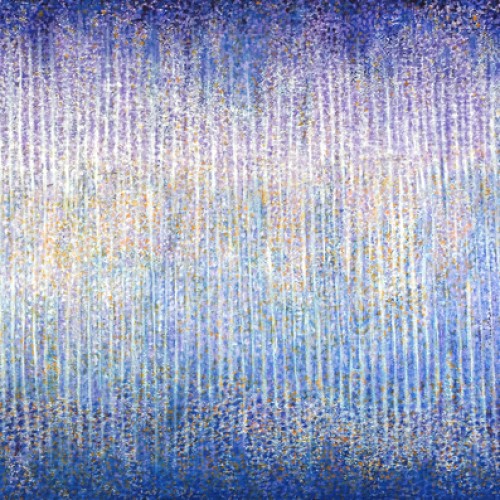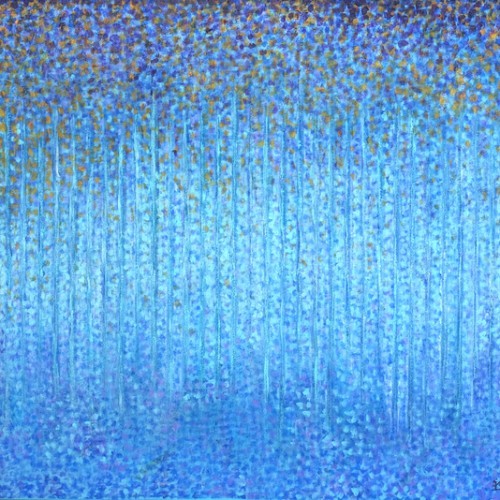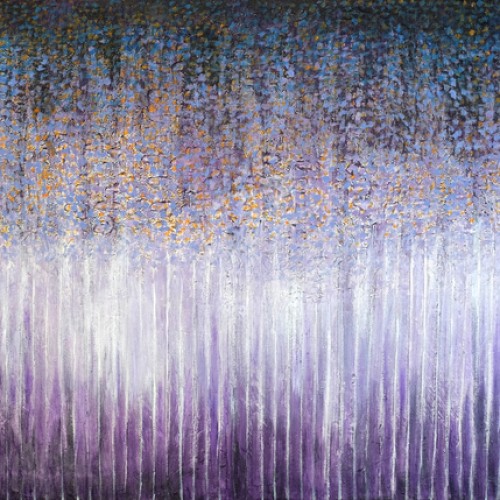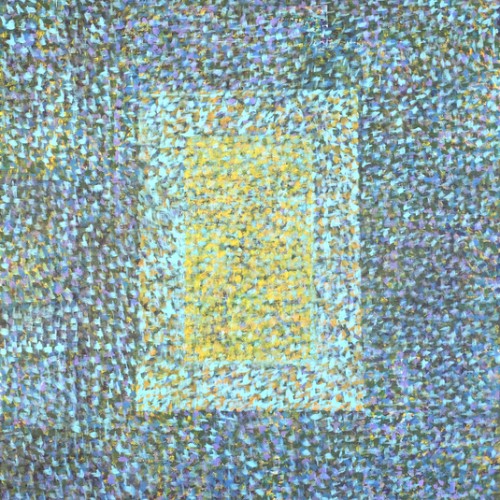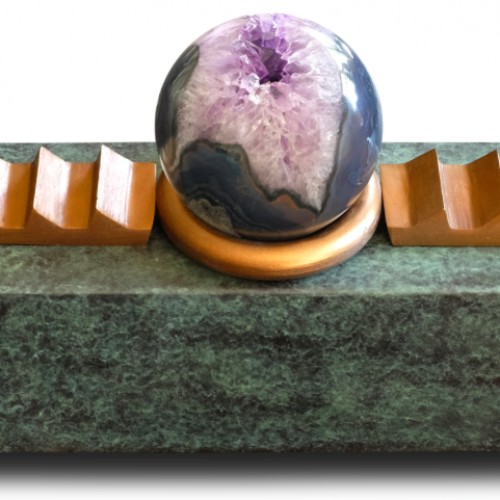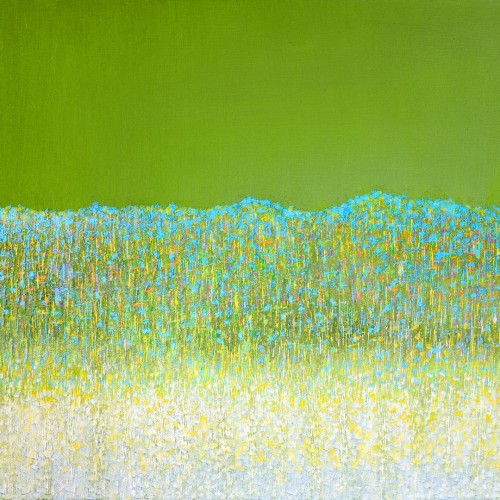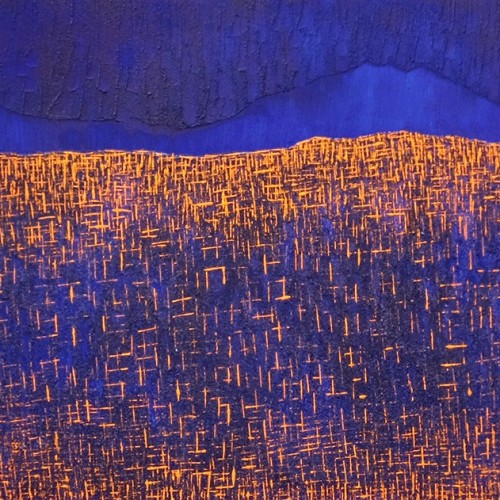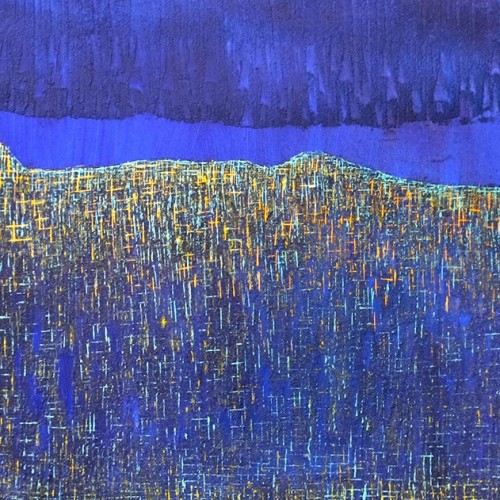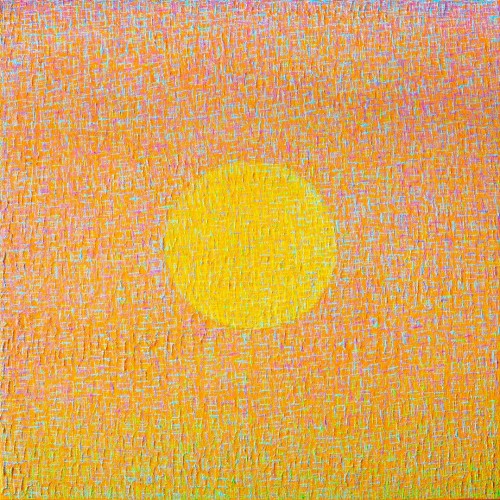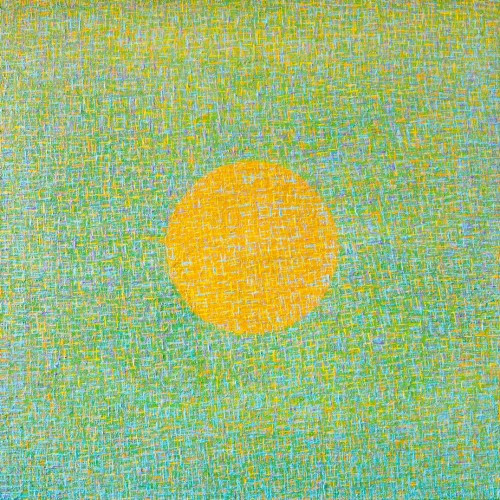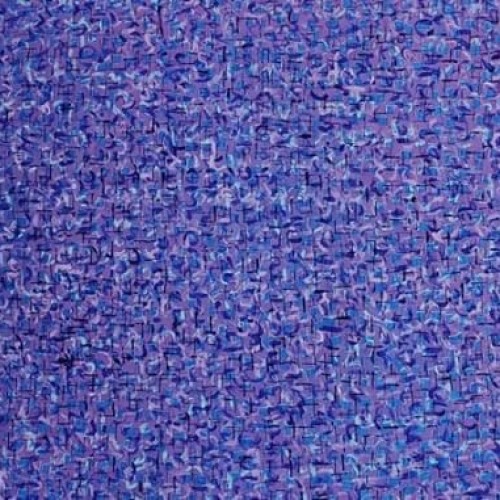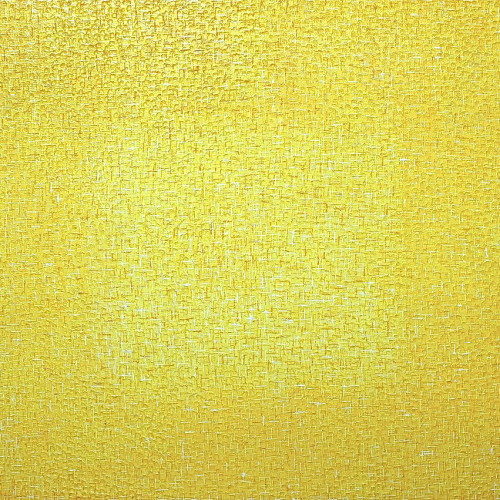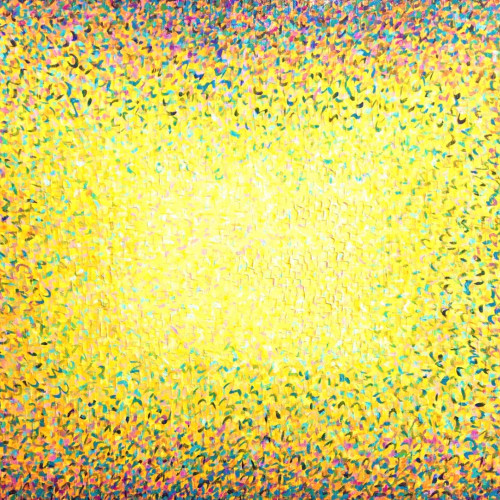Hyun Ae Kang
Hyun Ae Kang was born in 1959 in South Chungcheong Province, Korea.
Despite the rapid industrialization South Korea underwent in the 60s and 70s, the rural farming village that Kang spent her childhood in remained largely untouched by modernization, and she grew up with a deep appreciation of the natural beauty of the mountains and the seas that would become a through line for her art. Kang moved to Seoul in 1981 where she received both her BFA and MFA in sculpture from the prestigious Ewha Womans University.
In addition to sculpture, Kang also studied painting, drawing, print-making, and traditional Korean ceramics at Ewha Womans University. Kang’s career as an artist began in the early 1990s. Her first solo exhibition was in 1991 at the Gallery Hyundai in Seoul, the oldest and most revered contemporary art gallery in South Korea. Her sculptures were also included in a 1993 exhibition at the Art Museum of Soul in 1993 and the 1995 Korea Fine Art Grand Exhibition. She also taught as an instructor at the Hanyang Women’s College during this time.
The dominant theme of the works from this early period is the tension between geometric modernism and organic abstraction. Kang explorers the interplay between the theoretical and the natural through elements of sculpture. Pure geometric shapes, such as the sphere or cube, unfurl into amorphous forms whose irregularity evokes a sense of the primordial. Similarly, the uncanny smoothness of polished stone or bronze is disrupted by craggy patches resembling biomatter. Even Kang’s choice in mediums is an interrogation of the two seemingly oppositional concepts; by juxtaposing burnished bronze with grainy wood or translucent marble with impenetrable obsidian, Kang embraces material alterity to achieve visual harmony.
Kang immigrated to the United States in 1993, leaving behind her rapidly ascendant career in the Korean art world in order to expand her horizons. Despite having no prior connections to American galleries or museums, Kang was able to establish herself as a rising artist in Southern California.
Her first American exhibition was at the Cerritos Public Library in 1998. The move to the United States marked a major turning point in Kang’s art. Due to her unfamiliarity with American quarries and foundries, Kang shifted to creating paintings. And although these paintings are in many respects a continuation of her earlier sculptural phase, as evident in the continuous exploration of nature as a theme and use of texture, they also represent a new beginning for Kang.
Having become isolated from the Korean art world, Kang forged a new distinct style that was uniquely hers which can be seen in her use of color and texture. Having become isolated from the Korean art world, Kang forged a new distinct style that was uniquely hers. Unlike other artists of the Dansaekhwa movement whose works are characterized by monochromatic austerity and muted earth tones, Kang revels in her use of bright colors. Citing new found influence from American artists such as Rothko, Motherwell, and Frankenthaler, Kang embraces a more kaleidoscopic palette, painting with delightfully bright pigment whose luster evokes a sense of the ethereal.
Kang has been very active during the past decade, with her works being exhibited in galleries, art shows, and museums. She has had solo exhibitions in multiple cities in the United States, as well as Monaco, Mexico, Russia, and Italy. She has also been featured in many group shows in the United States, Italy, Russia, Korea, Hong Kong, and China. And most recently, Kang had her first career retrospective titled “Dialogues with the Sacred” at the Muzeo Museum and Cultural Center in Anaheim, California. The exhibition is the first retrospective for the artist in the United States and showcases works from her early career in South Korea as well as her most current projects. The exhibition, which spans the entire 5000 square feet of the museum space, includes works of sculpture, painting, and ceramics by the Korean-American artist.
WATCH Interview with Hyun Ae Kang:
https://youtu.be/_687e21-K1w
Hyun Ae KangжЇйџ©е›ЅзќЂеђЌзљ„и‰єжњЇе®¶пјЊе‡єз”џдєЋйџ©е›Ѕй¦–е°”гЂ‚е¦‚д»ЉпјЊеҐ№ењЁзѕЋе›ЅеЉ е€©з¦Џе°јдєље·ћз”џжґ»е’Ње·ҐдЅњгЂ‚ 在她的作品дёпјЊHyunз»“еђ€дє†дј з»џзљ„йџ©е›ЅзІѕзҐће’ЊиҐїж–№жЉЅи±ЎпјЊдЅїз”Ёе€ќжҐзљ„天然材料,主要жЇжњЁжќђпјЊе€›йЂ 她的创新,丰富的色彩和纹理混合媒体作品。她经常利用鲜艳的色彩和精心涂抹的油漆来创作作品,最终反ж 出她对生活的深刻个人愉悦态度。 她在20дё–зєЄ70年代开始了她的雕塑艺术生涯,后来转еЏдёєз»з”»пјЊиї™жЇеҐ№дЅње“Ѓзљ„一个方面,可以通过她画作дёзљ„и§¦и§‰ж ‡и®°зњ‹е‡єжќҐгЂ‚ “自从我在韩国首尔梨花女еђе¤§е¦иЋ·еѕ—и‰єжњЇе¦еЈ«е¦дЅЌе’ЊзЎ•еЈ«е¦дЅЌеђЋпјЊж€‘对雕塑的探索就开始了”, - sais HyunгЂ‚ Hyun Ae KangдєЋ1993年获得认可,当时首尔艺术博物馆收藏了她的永久收藏作品。 д»Ћй‚Јж—¶иµ·пјЊHyuns的作品已在全球展出,并被迈йїеЇ†пјЊжЈ•ж¦€ж»©пјЊжЈ•ж¦€жі‰пјЊзєЅзє¦пјЊAnaheimand和日本的重要收藏家收藏。 еҐ№зљ„дЅње“Ѓе±…дЅЏењЁй¦–е°”и‰єжњЇеЌљз‰©й¦†пјЊеЉ е·ћйїзєіжµ·е§†зљ„Muzeo艺术博物馆和文化дёеїѓд»ҐеЏЉеЉ 利福尼亚的布雷亚博物馆和历史е¦дјљзљ„ж°ёд№…и—Џе“ЃдёгЂ‚ “Hyunзљ„и‰єжњЇжЏз¤єдє†еёЊжњ›е¤§и‡Єз„¶зљ„奇妙和崇й«пјЊеҐ№жёґжњ›е€†дє«еҐ№зљ„信仰之旅,反ж 她渴望通过神圣的еењЁеЎ‘йЂ еҐ№зљ„з”џе‘ЅгЂ‚еҐ№зљ„дЅње“Ѓе› ж¤жЇеЇ№еҐ№зљ„一个非常和个性化的冥想作为艺术家与全能救赎者的关系“。
HYUN AE KANG: 2nd Generation of Korean Dansaekhwa
Dansaekhwa – “monochrome painting” – is a style of abstract painting that arose during the second half of the 1970s, combining Korean aesthetics and Far Eastern philosophy with Western modernist practice. Dansaekhwa artists used the ideas of ancient eastern philosophical schools, in particular Buddhism and Taoism, to explain their work, which was, rather, an artistic act.
If you look closely at the details of the paintings of artists of this movement, you can see that the surface is composed of numerous small textures of the material, made by countless repeated application and removal of strokes. Such a repeated, long act of creation reminds the long and very painful meditation of a Buddhist monk in an attempt to achieve nirvana. This incomplete process of searching for the deepest truths of oriental philosophical teachings by “talking” the artist with the material and creating a “silent” picture is the main goal of this artistic movement.
With a respect to traditions, Hyun Ae Kang significantly complements and expands this direction with her personal artistic story.
Moving away from monochrome, Hyun, like the Dansaekhwa artists, technically gravitates to texturing and tactility. Rethinking the elements of the techniques of the predecessors and based on her twenty years of experience as a sculptor, the artist creates abstract paintings, covering the canvas with thick strokes of paint layer by layer, achieving the effect of clay and ceramic-like strokes that give the surface a specific texture that distinguished Dansaekhwa artists too.
A meditative practice is a second element that associates Hyun and Dansaekhwa. Dansaekhwa is a movement that not only focuses on the exploration of monochromic colors, but also explores how those colors induce a meditative state within an individual. Making her works multicolored, Hyun achieves the same effect of meditation. The process of creating works is accompanied by ecstatic experiences too. Being a deeply religious person, Hyun spends a lot of time in prayers before starting work. This is significantly affects the paintings themselves, during the creation of which the artist continues the dialogue with the sacred.
«Regarding my style, all the touches and strokes I use are inscriptions of the dialogues with the sacred. These inscriptions are based on Korean alphabet characters and glyphs. When I create my reliefs onto the canvases, I think of myself as a scribe that is carving messages from the heavenly force into the worldly materials of stones and pumice. And with these inscriptions, I hope viewers will be able to reflect upon them and gain insights they could have not achieved beforehand,» — Hyun Ae Kang

